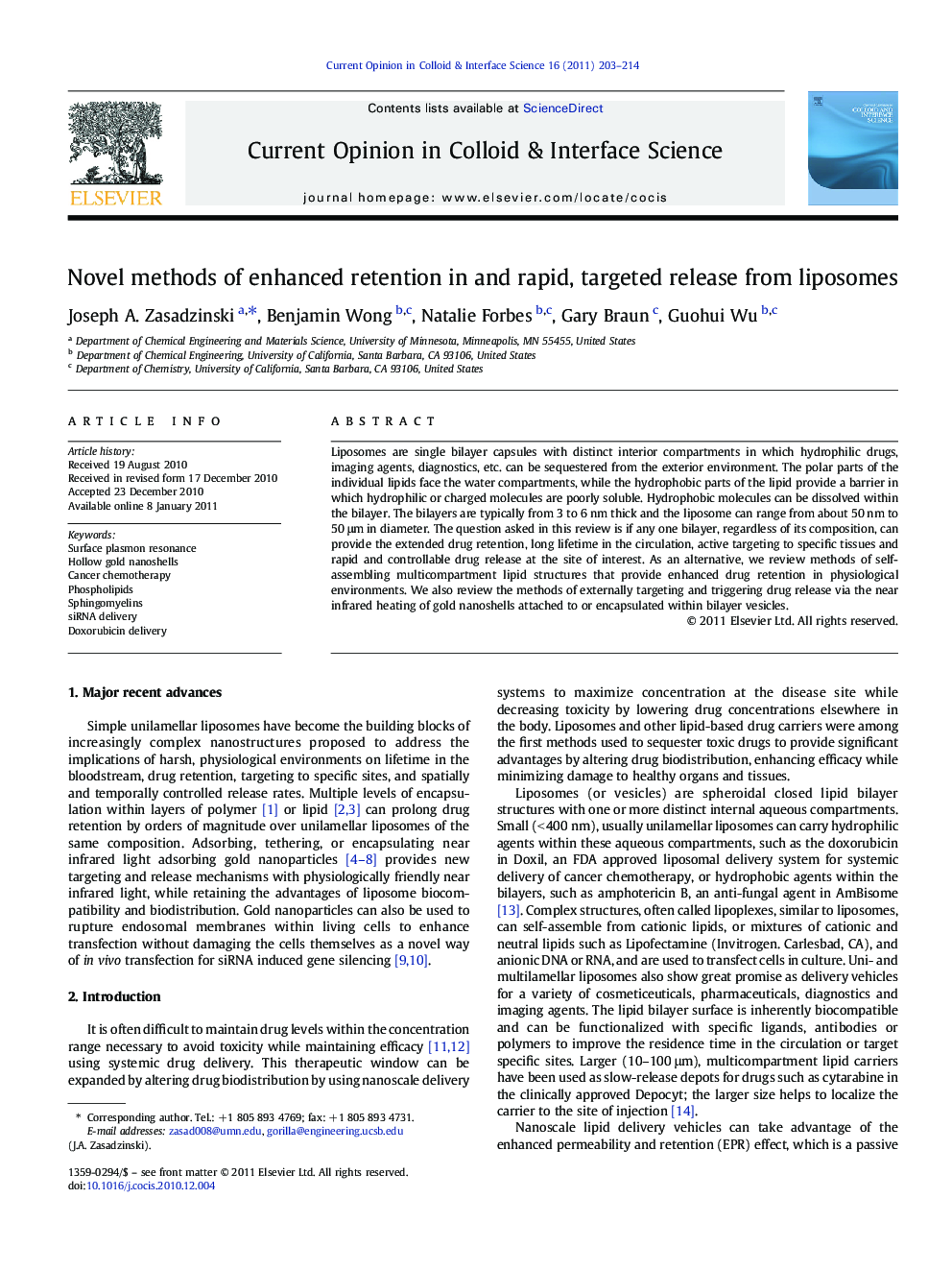| Article ID | Journal | Published Year | Pages | File Type |
|---|---|---|---|---|
| 603410 | Current Opinion in Colloid & Interface Science | 2011 | 12 Pages |
Liposomes are single bilayer capsules with distinct interior compartments in which hydrophilic drugs, imaging agents, diagnostics, etc. can be sequestered from the exterior environment. The polar parts of the individual lipids face the water compartments, while the hydrophobic parts of the lipid provide a barrier in which hydrophilic or charged molecules are poorly soluble. Hydrophobic molecules can be dissolved within the bilayer. The bilayers are typically from 3 to 6 nm thick and the liposome can range from about 50 nm to 50 μm in diameter. The question asked in this review is if any one bilayer, regardless of its composition, can provide the extended drug retention, long lifetime in the circulation, active targeting to specific tissues and rapid and controllable drug release at the site of interest. As an alternative, we review methods of self-assembling multicompartment lipid structures that provide enhanced drug retention in physiological environments. We also review the methods of externally targeting and triggering drug release via the near infrared heating of gold nanoshells attached to or encapsulated within bilayer vesicles.
Graphical AbstractFigure optionsDownload full-size imageDownload high-quality image (299 K)Download as PowerPoint slideResearch Highlights► Premature leakage and difficulty targeting have stymied liposomal drug delivery. ► A single bilayer may not be enough to protect drugs and target liposomes. ► Multiple lipid bilayers extend drug retention in physiological environments. ► Liposome targeting and drug release can be initiated by pulsed laser light. ► Near infrared light and gold nanoshells can rupture endosomes without killing cells. ► Multicompartment liposomes with nanoshells may be the drug carrier of the future.
